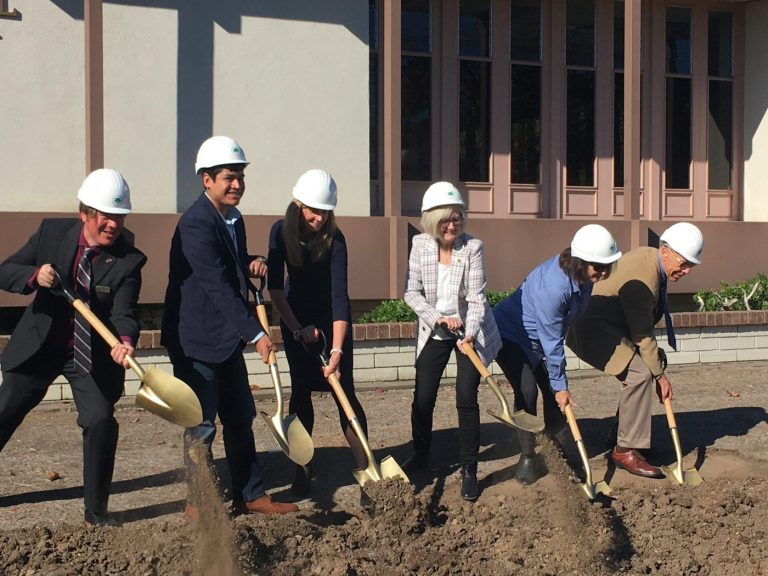Jeff Ostrowski | (TNS) Bankrate.com
The chasm between the nation’s priciest housing markets and the most affordable regions has been growing wider. The typical home price in Silicon Valley eclipsed $2 million during the second quarter of 2024, according to the National Association of Realtors. That number looms even larger when contrasted with the nation’s cheapest market, Decatur, Illinois, where the median sale price was just $126,700. In other words, it costs nearly 16 times as much to buy a home in San Jose, California, as it does in Decatur.
Given that gap, why aren’t more Americans moving to cheaper areas?
The truth is, some are. In late 2020, video game designer Tyler Jaggers gave up his dream of buying a home in San Jose and moved to Topeka, Kansas, where he bought a fixer-upper for less than $50,000.
Moving meant leaving behind relatives in California, but Jaggers says he doesn’t regret the move, calling it a “no-brainer.”
But the reality is that many Americans would rather live in pricey housing markets, even if it requires sacrifice. In early 2024, Dina Colino bought her first home: a small condo in Los Angeles. She had to cobble together a variety of down payment assistance programs to do so — a long journey that ultimately paid off.
The massive gap in home prices nationwide
In the costliest corner of California, median home prices topped $2 million in the second quarter of 2024, according to the National Association of Realtors. In other coastal markets, such as San Diego, a typical home costs more than $1 million. But there are a number of smaller cities, mostly in the Midwest, where home prices were less than $200,000.
Here are the five most expensive metropolitan areas, based on the median price of existing single-family homes sold in the second quarter of 2024:
—San Jose-Sunnyvale-Santa Clara, California: $2,008,000
—San Francisco-Oakland-Hayward: $1,449,000
—Anaheim-Santa Ana-Irvine, California: $1,437,500
—Honolulu: $1,101,500
—San Diego: $1,050,000
On the other end of the affordability scale, here are the five most affordable markets:
—Decatur, Illinois: $126,700
—Elmira, New York: $150,600
—Cumberland, Maryland: $152,800
—Youngstown, Ohio: $164,700
—Peoria, Illinois: $168,500
How moving to Kansas made homeownership possible for one aspiring homeowner
When the pandemic hit, Jaggers decided he was done with Silicon Valley and its eye-watering cost of living. His income was too low to qualify for a mortgage in the nation’s most expensive housing market, and due to working remotely, he no longer gained a career advantage from living there.
In his search for a cheaper place to live, Topeka caught Jaggers’ eye. He learned about the area’s modest housing costs and Choose Topeka, a program that offers up to $15,000 to remote workers who move to town and buy a house. (At the time Jaggers moved, the incentive was $10,000.)
Jaggers applied for the program and was quickly accepted. He bought a house for just $47,000 and received the $10,000 incentive soon after he moved, which he put toward roof repairs.
Four years after the move, Jaggers says he’s happy with his decision.
“You can own your property and not have a huge mortgage,” he says. “I wouldn’t have even been able to get a mortgage in California.”
Between the lower cost of living in Kansas and a steady income from his remote work, Jaggers has gained ground financially. In fact, he has already paid off his house and a car loan for a new Subaru he took out shortly after moving to Kansas.
Despite owning a property he now calls home, Jaggers acknowledges that he misses his family and California’s milder weather. But he says the financial payoff that has come with moving to a more affordable area has been a huge reward.
“People might be a little bit scared to move somewhere where they don’t necessarily know anyone,” he says. “But I’ve already made a lot of friends.”
How a first-time buyer in California made it work in a costlier market
Colino is also a California native. She tried moving to a cheaper housing market and took a job in Texas for a time. But Colino, who works as a medical assistant at a hospital, ultimately decided she was willing to make the sacrifices required to live in her home state.
“I’m from California,” Colino says. “My whole family is here. The weather is amazing.”
While Colino had been renting, she says her sister pushed her to become a homeowner. But achieving that goal required some lifestyle changes, including paying down debt, boosting her credit score and, for the first time, setting a budget.
Before starting to pursue homeownership, Colino says, “Every penny I made, I spent.”
Getting her finances in order took more than a year and was a long journey that she often wanted to quit, but she persevered. Then, as Colino started shopping for homes, she had little choice but to rein in her expectations.
“I wanted a house — I never thought of a condo,” Colino says. “But California is very, very expensive.”
So Colino opted to purchase a condo. As a first-time buyer with a modest income, she qualified for down payment assistance, which proved crucial. She landed a Ladder Up Home Loan grant from City National Bank. The program lets buyers direct funds toward a down payment, closing costs or buying down the interest rate on their mortgage. In addition, mortgage insurance isn’t required regardless of the down payment amount.
Colino also secured a $151,000 interest-free loan from the city of Los Angeles.
Nearly six months after moving into her condo, Colino is pleased with her decision. “I’m living the dream,” she says. She has a short commute to work, and she’s glad to be on more solid financial footing.
But she can’t escape the reality of California’s costly housing market. One of those realities? “My closet is so tiny,” Colino says.
Why aren’t more buyers moving to cheaper markets?
The coronavirus pandemic unleashed an affordability migration. Homeowners in California and Seattle moved to Arizona, Nevada, Utah and Idaho, while residents of the Northeast flocked to Florida, Georgia and South Carolina.
Now, though, the housing market seems to have returned to its pre-pandemic trajectory — home values in coastal markets are soaring, while those in flyover country remain modest.
Before the pandemic, home prices were soaring in locales such as Silicon Valley and Seattle because that’s where the high-paying jobs were located. Remote work allowed homebuyers to take their big-city paychecks to more affordable housing markets.
However, many employers are once again requiring employees to return to offices. Amazon announced this month that it will require employees to work from company offices five days a week starting in January, and other major employers likewise are unwinding virtual work arrangements — which means the premium on properties in tech hubs is back with a vengeance.
“The Midwest is certainly more affordable, but maybe the job market is not there,” says Lawrence Yun, chief economist at the National Association of Realtors. “Of course, there is 100% remote work, but there is some uncertainty.”
Daryl Fairweather, chief economist at real estate brokerage Redfin, likewise sees a return to pre-pandemic trends, both in terms of working from the office and home price appreciation. In the Midwest, she says, “The job market still hasn’t recovered — and the weather isn’t helping, either.”
(Visit Bankrate online at bankrate.com.)
©2024 Bankrate.com. Distributed by Tribune Content Agency, LLC.












